Loading Images
Please bear with us...
Information
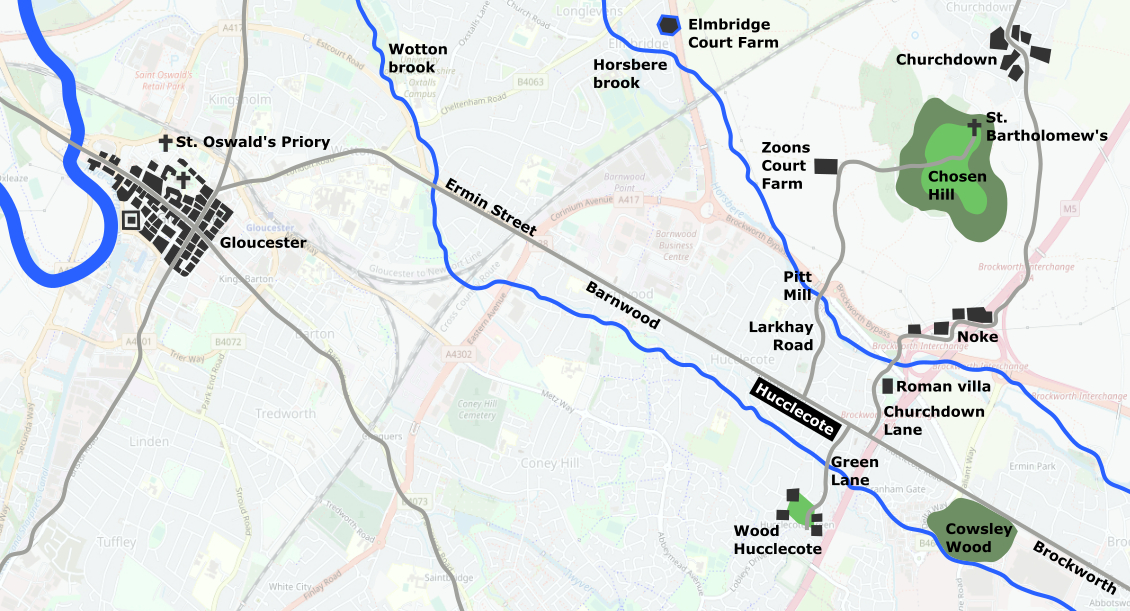
Map of ancient Hucclecote
Modern day Hucclecote is a former village and now Gloucester suburb adjoining Barnwood to the west. It straddles the ancient Ermin Street, the Roman road to Cirencester which, in its modern incarnation, takes the name of the suburb while it passes through it.
Hucclecote was subsumed by Gloucester only in the last century or so, particularly since the 1950s. While many of its spaces and old buildings have been lost to redevelopment, its environs remain the location of thirteen sites listed by Historic England (bolded in the narrative below), all of them grade II. They sit like memorials to a village that did not itself survive the tide of progress in one piece – in 1967 that part of the parish to the east of the newly built M5 motorway, which currently marks the city limit, became a separate parish in the borough of Tewkesbury.
Origins
Archaeological excavations around the modern-day Hucclecote playing field, near the junction of the M5 and A417, has revealed evidence of late bronze age and early iron age settlements, as well as a 2nd-century AD Roman villa.
The origins of Hucclecote itself can be traced as far back as 1066, when it was, alongside neighbouring Churchdown, part of the manorial estates belonging to St. Oswald's Priory in Gloucester. At that time, and for centuries after, Hucclecote was spread over a reasonably large area but contained only a few scattered farmsteads and cottages.
The original, irregularly shaped Hucclecote included the summit of Chosen Hill to the north and a peninsula of land to the north-west that is modern day Elmbridge. It was bounded to the south-west by the Horsbere brook (which may have originally been called the Huccle brook), along which the A417 runs today. To the south it was bounded by the Wotton brook, which runs south of and roughly parallel to Hucclecote Road. Cowsley Wood was recorded in 1399 to the south-east, roughly where the modern-day Gloucester Business Park sits (and survives at least in name by the modern-day Cowsley Drive nearby).
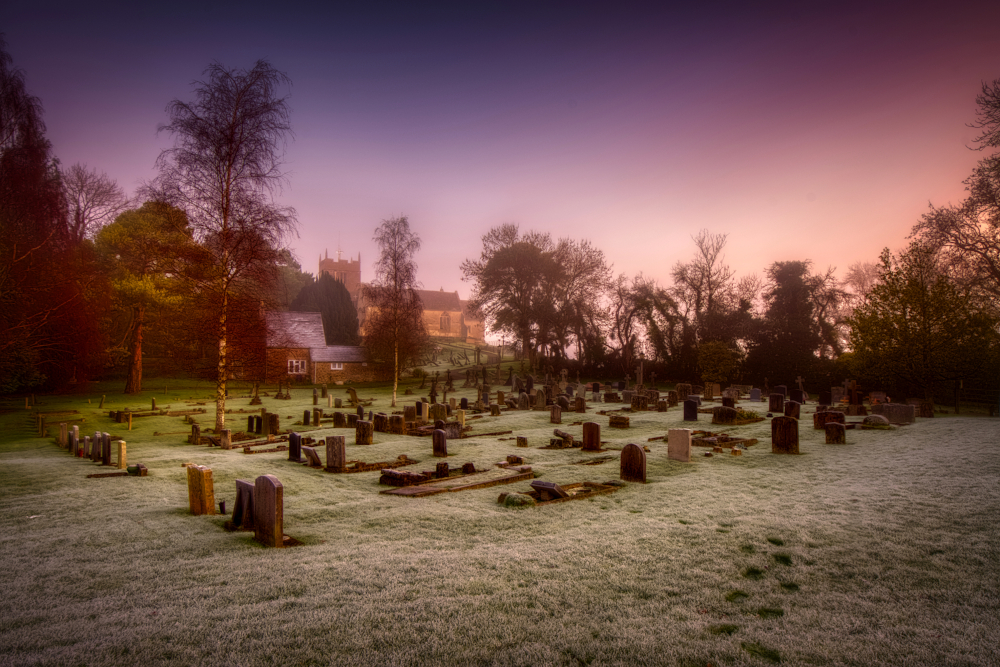
12th-century Church of St. Bartholomew on the summit of Chosen Hill
Until the late 13th century Hucclecote was served by a chapel that was equal in status to the 12th-century Church of St. Bartholomew on the summit of Chosen Hill. The chapel was abandoned some time after 1289, leaving St. Batholomew's as the parish church.
Tax records from 1327 show two small clusters of buildings in Hucclecote: Noke, at the foot of Chosen Hill where the Noake Farmhouse and Noake Court Farm barn can still be found today; and Wood Hucclecote, possibly also known in 1243 as Little Hucclecote, south of the Wotton brook. The names (Noke is derived from the word oak) indicate the wooded landscape of the time. In each cluster there were just four people assessed for taxes.
Original Routes
The church and buildings of ancient Hucclecote were linked to Ermin Street by three roads, all of which can still be travelled today.
Churchdown Lane, variously known in the past as Court Lane and Green Street, runs north past Noake Court Farm on its way to Churchdown. In 1451 the wooden bridge that took it over the Horsbere brook was called Mill Bridge, evidence of the many mills that once existed along the brook. The route of the lane was shifted eastwards with the construction in the 1960s of the Hucclecote bypass.
Larkhay Road, west of Churchdown Lane, also runs north from Ermin Street. In 1591 it was known as Lark Lane, and in 1486 it crossed the Horsbere brook on its way up to St. Bartholomew's at Pitt Mill. The mill is marked as disused on an 1886 map and survives today in name only with Pitt Mill Gardens, a close nearby.
Green Lane runs south from Ermin Street. It crossed the Wotton brook by a wooden bridge – known as Pill Bridge in 1424 – to a green around which Wood Hucclecote was built. The green still exists today as Hucclecote Green, some 725 yards (665 metres) down the lane, the location of Green Farmhouse.
Growth
Ermin Street was the main route between Gloucester, Oxford and London. Between 1698 and 1718 and again between 1723 and 1871 the stretch through Hucclecote was a turnpike, fostering the growth of the village along the route.

Royal Oak
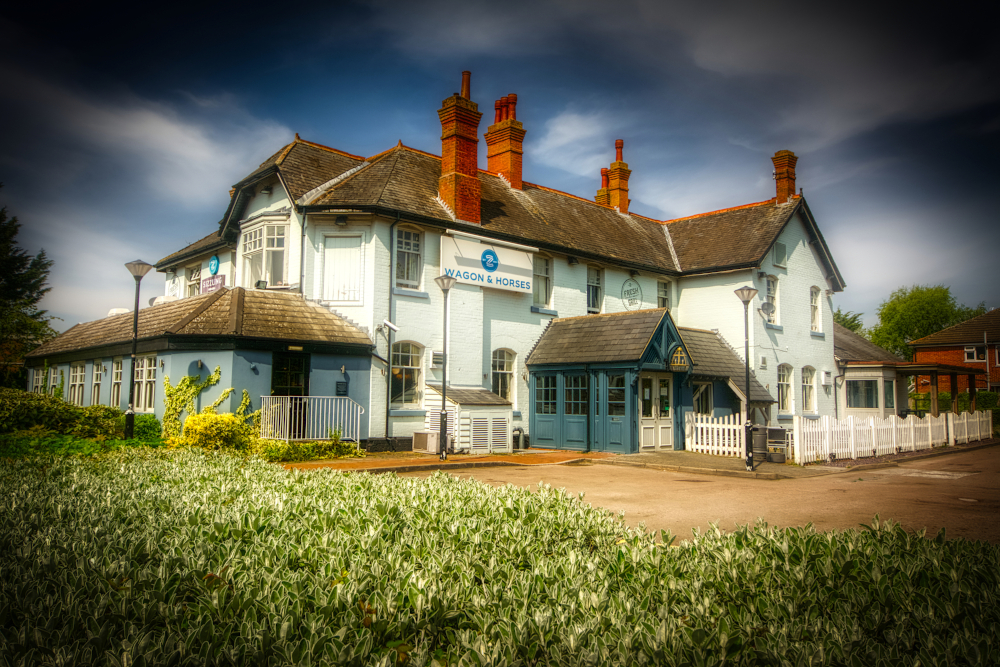
Wagon & Horses
Inns had been established along Ermin Street by 1598. The Fiery Beacon, recorded in 1638, may have become the Royal Oak in 1841. The Wagon and Horses appears in the record in 1767, and the Victoria Inn was serving customers in 1846. All three can still be visited along the Hucclecote Road today, although the Royal Oak changed premises in 1957, the Wagon and Horses was rebuilt c.1900 and the Victoria Inn, also rebuilt around the same time, is now in Brockworth.
Cottages and farmhouses were being built along Ermin Street from the 16th century. Survivors can still be seen scattered amongst the more recent developments that line Hucclecote Road today: Forge House, a late 16th or early 17th-century cottage; Vine Cottage and Old Farm Cottage, originally a single mid 17th-century house; Gartage Hall, a mid to late 17th-century farmhouse; and, opposite it, a short way down Green Lane, Parsonage Cottage, a mid to late 16th-century dwelling.
In the second half of the 18th century more substantial houses were being built along Hucclecote Road for wealthier residents. Of these, Hucclecote Court, built in 1775 for the baronet Sir William Strachan, still survives as a solicitors' office.
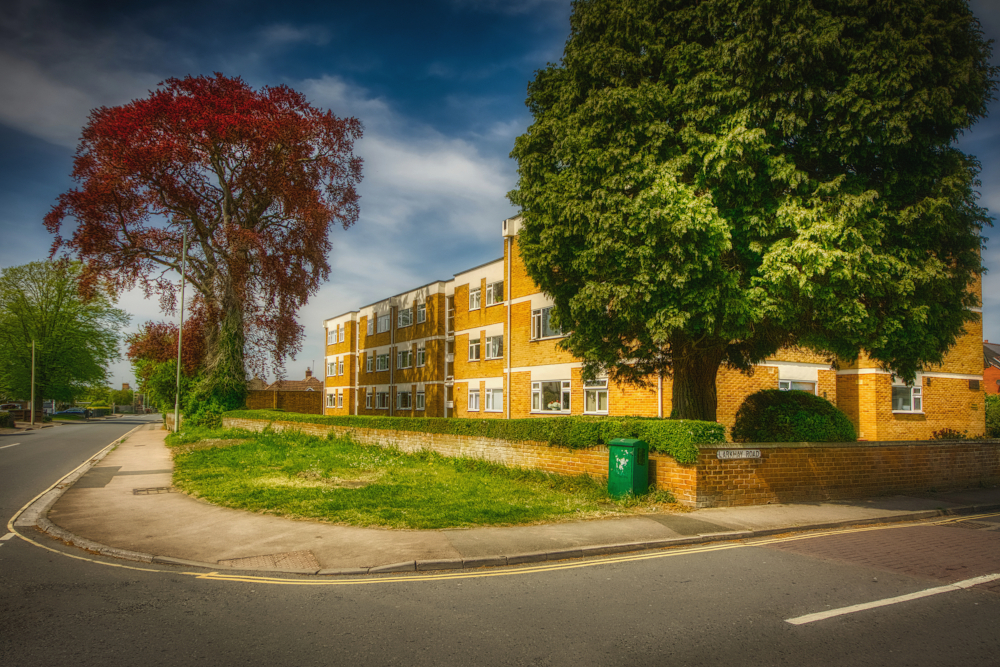
Cedars flats on the site of Larkhay Villa
In the early 19th century new cottages and villas expanded the village westwards along Ermin Street towards the neighbouring parish of Barnwood. One such, the 1820s-built Larkhay Villa, has been replaced by the modern Cedars apartment block. Across the road from the site of Larkhay Villa its contemporary, The Vicarage, still survives as a private house, while Hucclecote Mews, built in 1835 next door to Hucclecote Court, is today part of a sheltered accommodation complex for the elderly.
At the beginning of the 19th century, Hucclecote's population numbered 234. In 1850 the village acquired its own church with the consecration of the Church of St. Philip and St. James, and by the end of the century its population had increased to 459.
Hucclecote's small noncomformist community was served by a Methodist chapel built on Hucclecote Road in 1848. Although this was demolished in 1929, having been replaced by a new chapel on nearby Carisbrooke Road, its cemetery still remains.
Hucclecote's size and character began changing from the 1890s as it increasingly became a dormitory town for Gloucester. Development extended east along Ermin Street towards the neighbouring parish of Brockworth. New housing was built along Green Lane and several new roads off Ermin Street. Between 1891 and 1901 the number of houses in the village increased by nearly 50% to 142 while the population increased to 671. A new electric tramway linking the village with Gloucester in 1904 encouraged further growth, and in 1911 Hucclecote's population was 1,103.
The village remained a farming community into the early 20th century, made up mostly of smallholdings but with two large farms at Elmbridge Court and the still extant Zoons Court.
From village to suburb
The presence of the Hucclecote war memorial – unveiled in 1920 after the First World War – attests to Hucclecote's status at the time as separate village rather than city suburb.
One of the first housing schemes created by the Gloucester Rural District Council, established in 1894, was twenty new council houses at Dinglewell in 1920. Hucclecote's borders contracted in 1935 when Chosen Hill became part of Churchdown while Elmbridge became part of the new civil parish of Longlevens.
An airfield had been established near the eastern boundary of Hucclecote at Brockworth in 1915 which, in the late 1920s, attracted the Gloster Aircraft Factory (both now redeveloped as the Gloucester Business Park). They attracted further development to the village and, in the Second World War, German bombers, which accounts for the civilian names amongst those added to the village war memorial after that conflict.
After the Second World War the settlements on the peripheries of Gloucester experienced significant expansion. To the piecemeal development of Hucclecote by private concerns was added further development by the Rural District Council from 1956.
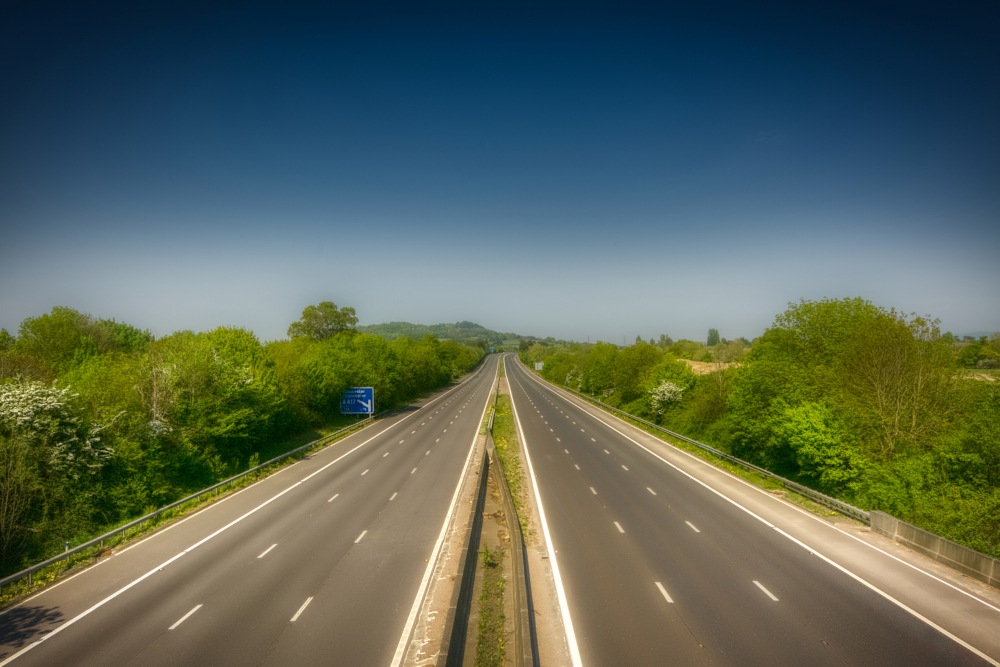
M5, since 1967 the eastern limit of the city of Gloucester
In 1967 the M5 motorway was constructed through the village and civic boundaries were adjusted. That part of Hucclecote to the west of the motorway and south of the A417 became a ward within the expanded city of Gloucester. The area east of the motorway, south of the A417, and the lower slopes of Chosen Hill to the north of the A417, west of the motorway, became a civil parish within the borough of Tewkesbury. The area was subject to extensive private development; by 2011 the ward had a population of nearly 9,000, and in 2020 the population of the parish was around 2,500.